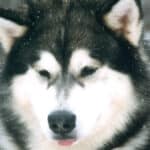Interview with Dr. Michael Woods – 2023 WKC Dog Show Breed Judge
What does it mean to be invited to judge at this year’s historic Westminster Kennel Club Dog Show?
Dr. Michael Woods: To paraphrase Kander and Ebb’s famous homage to New York, if you can make it at Westminster you can make it anywhere. That is precisely why winning at Westminster is so special. Not just winning BIS or Groups, or even placing in Groups, but winning a Breed, or getting Select or an AOM. (For which other all-breed shows do exhibitors advertise that they won a Select or an AOM?) Any award at Westminster is something to celebrate; an extraordinary accomplishment. The same can be said for judging at Westminster.
There are other wonderful shows in North America, but Westminster is different, extraordinary, and a unique honor to judge. Westminster is not just America’s Dog Show; it is North America’s Dog Show. Every judge, I believe, thinks about judging at this iconic show. For me, it was an honor to be asked to judge, and the show certainly lived up to my expectations. The show radiated the buzz and excitement of New York itself. The dogs, the venue, the hospitality, the enthusiasm of the spectators, the good sportsmanship of the exhibitors; so many things that make Westminster a privilege to judge.
Can you share your thoughts on your various Breed assignments? Please be specific.
Dr. Michael Woods: The top five dogs in each breed plus each National Specialty winner are invited to Westminster. Even if not all attend, one generally gets the best dogs in a breed at Westminster; not something that happens at any other All-Breed show. I expected to have some very high-quality exhibits. I was not disappointed. Generally, there was good type and soundness evident in all my breeds, even the traditionally low number ones.
The Bracchi Italiani, Westminster’s newest breed, had a solid entry of ten. Most displayed the most essential characteristics of the breed: square/off-square outline, divergent head planes, two-line topline, and fluid ground-covering gait. Given the breed’s wide height tolerance of four inches for each gender, it is to be expected that there be an acceptable height variance between some specimens, and there was. Overall, for a new to North America breed, this is a breed that displayed a great deal of quality and has a bright future in the show world.
Flat-Coated Retrievers were my largest entry (22). Many elegant exhibits with correct one-piece heads, correct blunted triangle outlines, and smooth movement. One thing that stood out was the excellent condition most exhibits were in. Two dogs were over ten, the Breed winner was eight; all well-muscled. This breed needs to be commended for showing dogs in such excellent condition, which is not something that can be said about all Sporting breeds.
Nova Scotia Duck Tolling Retrievers had some wonderful quality in the males. There were three dogs that would have been worthy Breed winners. This breed has come so far from when I first started judging them decades ago, when so many looked like Goldens-gone-wrong or were weedy and unsound. Now Tollers are a force to be reckoned with in the Sporting Group. The Breed winner was a lovely dog with great breed type and excellent movement.
Chesapeake Bay Retrievers had generally good type throughout and looked as if they could do a hard day’s work in the field. Proper coats (although one lovely bitch was, unfortunately, seriously naked), pleasing heads, and correct toplines. Looking at my catalog later, I was so pleased to see that many of the exhibits had hunting titles. The Breed winner, in addition to being an outstanding show dog, also had a Master Hunter title—no mean feat! This is a breed where show and field have not experienced the wide divergence seen in so many other Sporting breeds and should be applauded for efforts to keep the breed true to its purpose.
The Pointer Breed winner was certainly one of my most outstanding dogs of the day. She had a very lovely head with great length of muzzle, a compact outline, and a “bee-sting” tail that lashed as she moved. She covered ground with power and grace. She very deservedly placed in the Group. Generally, the entry avoided the hound characteristics that are the “drag” on the breed.
Curly-Coated Retrievers, Kooikerhondje, and Wirehaired Vizslas, although rarer breeds and small in number, all had some very representative examples of the breed and were a pleasure to judge.
Now that it’s over, what are your thoughts on the 2023 show year? Any thoughts on the year ahead?
Dr. Michael Woods: I am cautiously optimistic about our sport in 2023. The Pandemic has been contained, although, unfortunately, not eradicated. People are travelling again and exhibitors want to get out and go to shows. The dog community is rallying against those who, unfairly and irrationally, denigrate our sport. Most importantly, there are great breeders producing healthy, purpose-bred dogs that are just waiting to appear in the show ring.








